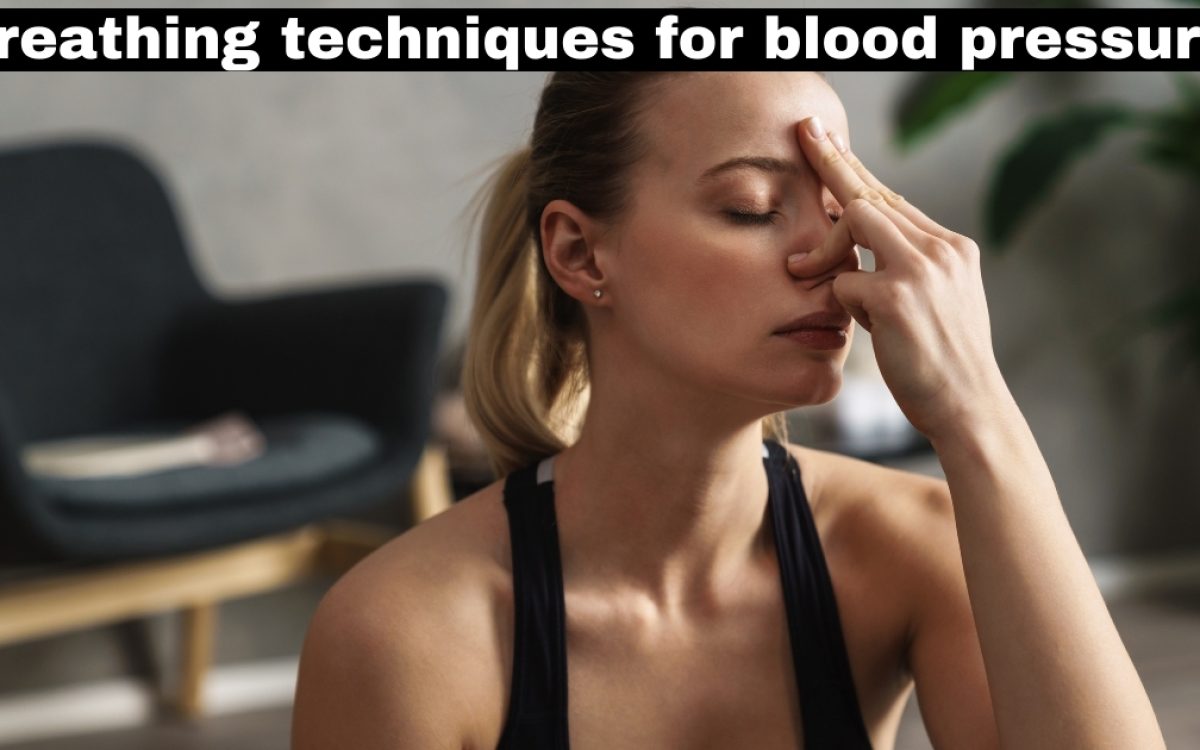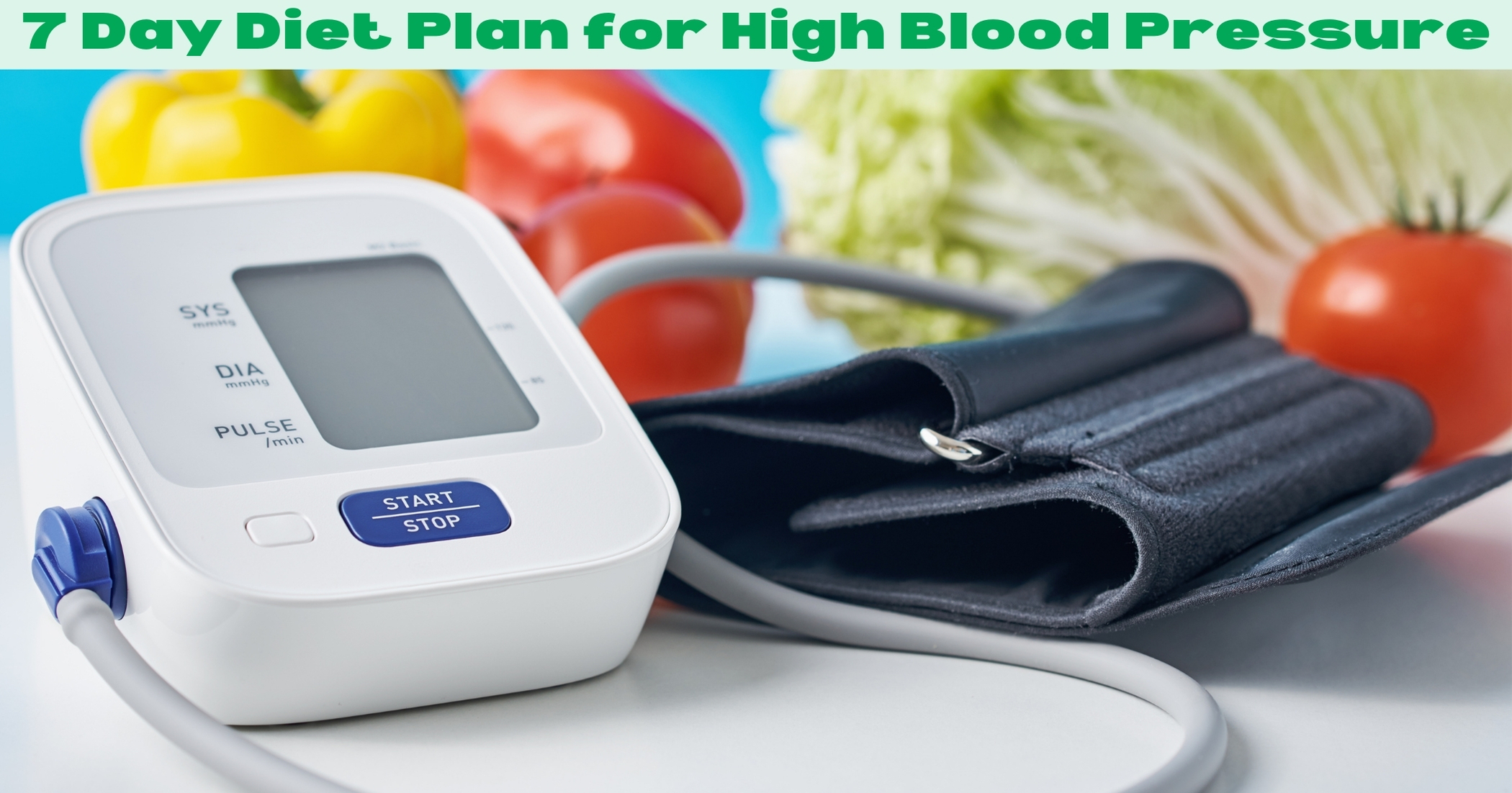There was a time when Sami lived in a busy city. She was a hardworking worker who had to balance work and family. Even though Sami worked hard, she was dealing with high blood pressure, which was a quiet but dangerous enemy that threatened her health. In order to take back control of her health, Sami set out on an adventure where she learned “Breathing Techniques to Lower Blood Pressure” to help her fight high blood pressure. The high number of people with high blood pressure is a significant problem in today’s busy world, where worry and inactivity are common. However, there is a bright spot of hope: breathing exercises are a natural, easy, and effective way to lower blood pressure and improve circulatory health in general.
Table of Contents
ToggleHow to Read Blood Pressure: A Starting Point
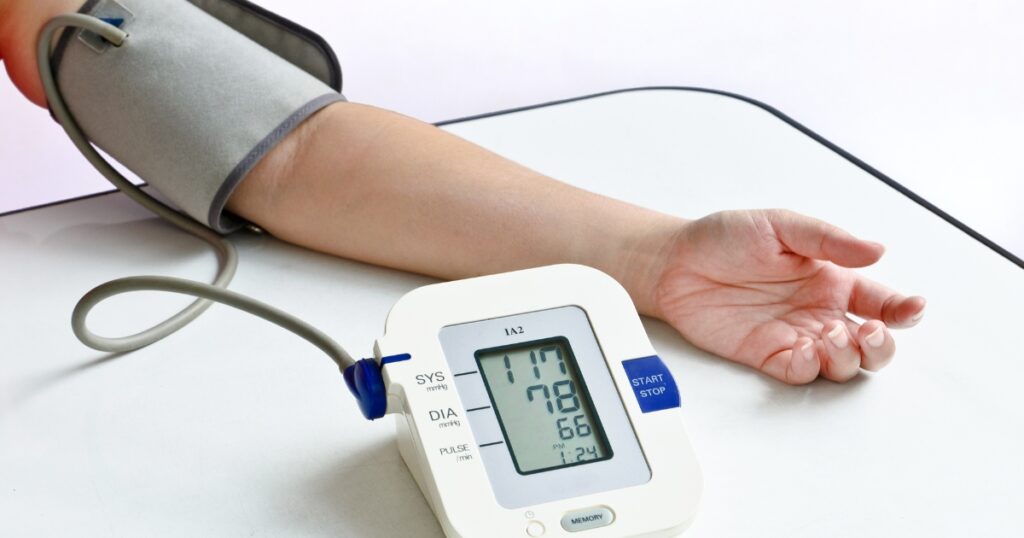
Blood pressure shows how hard blood is pushing against the walls of arteries and is a vital sign of how well the heart is working. Hypertension, or high blood pressure, can lead to significant health problems like heart disease and stroke if it is not treated. In contrast, keeping blood pressure at healthy ranges is essential for long-term health. For this, practising breathing techniques to lower blood pressure is one of the effective ways to reduce blood pressure.
The facts and numbers
The World Health Organization says that more than 1.13 billion people around the world have high blood pressure. This shocking number makes it clear that we need to move right away to stop the silent epidemic of high blood pressure. Thankfully, tactics that have been shown to work, like breathing exercises, give us hope in our fight against cardiovascular disease.
How to Use Breathing Techniques to Heal
Using the natural link between breath and body, Breathing Techniques to Lower Blood Pressure takes a whole-person approach to managing blood pressure. Mindful breathing can help people feel less stressed and more relaxed by activating the body’s relaxation reaction. Research also shows that doing breathing exercises regularly can lower both systolic and diastolic blood pressure numbers by a significant amount.
Changing to a healthier way of life
Learning how to use breathing techniques to lower blood pressure is the start of a new era in natural health. A wide range of techniques are available to be explored, from easy deep breathing exercises to guided meditation and yoga. By adding these habits to their daily lives, people can start a life-changing journey to better heart health and general well-being.
The Link Between Breathing and High Blood Pressure
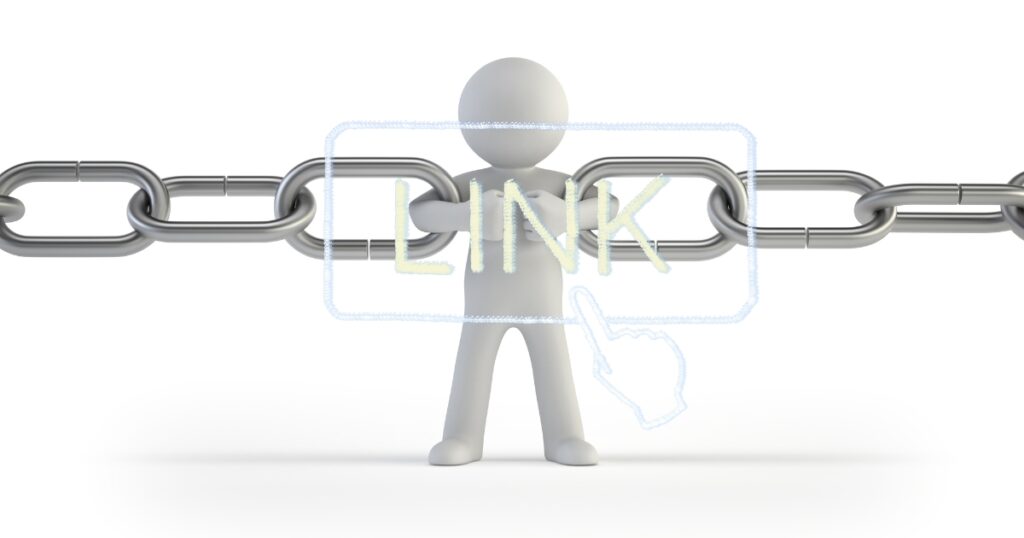
In John’s quest for better health, he came across an interesting fact: there is a deep link between breathing and blood pressure. John learned that because the respiratory and circulatory systems work together so closely, the way we breathe can have a direct effect on our blood pressure.
Why using breathing techniques to lower blood pressure is a good idea.

The blog Breathing Techniques to Lower Blood Pressure has a lot of helpful information for people who want to control their blood pressure better. People can improve their overall cardiovascular health by adding easy but practical breathing exercises to their daily routines:
Stress Reduction:
Deep breathing sets off the body’s relaxation reaction, which lessens the effects of stress hormones like adrenaline and cortisol. Breathing Techniques to Lower Blood Pressure helps ease stress in blood vessels by making you feel calmer. This lowers your blood pressure.
Better Circulation:
Good breathing increases the flow of oxygen to organs and cells, which helps the body’s circulation work at its best. Getting enough oxygen to tissues makes the heart’s job easier and helps keep blood pressure at a safe level.
Better heart health:
Regularly using breathing techniques to lower blood pressure makes the heart muscle stronger and enhances the heart’s general performance. Breathing exercises improve the heart’s efficiency, which is good for long-term heart health and lowers the risk of heart illnesses like heart attack and stroke.
Reduced Blood Pressure:
Studies show that regular use of Breathing Techniques to Lower Blood Pressure can significantly lower both systolic (top number) and diastolic (bottom number) blood pressure levels. Studies have shown that people whose daily practice includes breathing exercises see significant drops in their blood pressure, often about the same level of effect as taking antihypertensive drugs.
How to Start: The Basics of Good Breathing
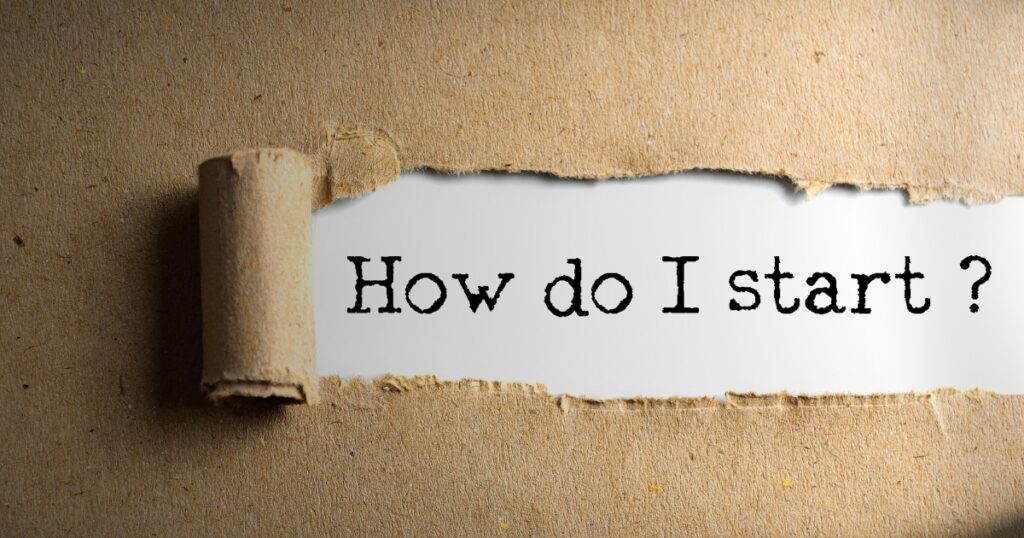
By learning the basics of how to breathe correctly, Breathing Techniques to Lower Blood Pressure gives people the tools they need to start improving their health. To get started, here are some essential tips:
Diaphragmatic breathing:
This is also called “belly” or “abdominal” breathing, which includes contracting the diaphragm to take in more air. Sit or lie down easily, put one hand on your stomach and the other on your chest, and take a deep breath in through your nose. As you breathe in air, feel your stomach rise. Then, slowly let out the air through your mouth, letting your stomach fall. Do this exercise for a few minutes every day to make your diaphragm stronger and your breathing better.
Mindful Breathing:
Being mindful means focusing on the present moment without judging it. Mindful breathing means paying close attention to how your breath feels as it comes in and goes out of your body. With each breath, pay attention to the rise and fall of your chest or abdomen. Also, don’t link yourself to any thoughts or feelings that come up. Focus on being present and aware during each breath in and out. This will help you connect more deeply with your body and breath.
Making Breathing Techniques to Lower Blood Pressure a part of your daily life is essential if you want to get the most out of this practice. Mindful breathing should be done every day, whether it’s when you wake up, during breaks at work, or right before bed. To get the most out of breathing exercises and keep your blood pressure under control, you need to be committed to practising them regularly and consistently. By following the basic rules of good breathing and using the life-changing power of Breathing Techniques to Lower Blood Pressure, people like John can start their journey to better health and lower blood pressure.
Deep breathing exercises can help lower blood pressure.
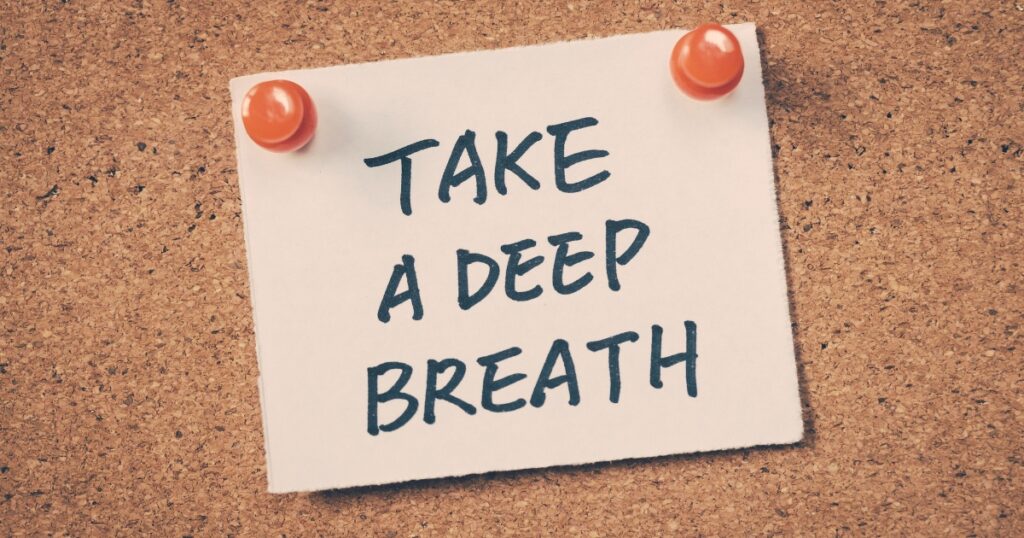
Picture a peaceful scene with a light breeze rustling the leaves and the steady beat of waves hitting the shore. While you’re in this calm place, deep breathing exercises become a powerful tool for controlling your blood pressure. Deep Breathing Exercises for Lowering Blood Pressure can help you find peace and health in a world that is full of stress and strain. In this part, we’ll look at how conscious breathing can help you control your blood pressure, using both scientific evidence and real-life examples. Deep breathing exercises involve slowly drawing air into and out of the lungs on purpose. This helps the body get more oxygen and rest. People can activate the parasympathetic nervous system by contracting the diaphragm and expanding the chest cavity. This sets off a series of physiological reactions that lower blood pressure. Researchers have found that doing deep breathing exercises regularly can lower both systolic and diastolic blood pressure levels by a significant amount. Deep breathing also makes you feel calm and clear-headed, giving you a break from the stress of everyday life.
Deep breathing techniques are flexible and easy to do. They can be done on their own or as part of mindfulness practices. Deep breathing can be easily incorporated into daily life, from morning meditation to stress-relieving breaks in the middle of the day. This way, people can enjoy all the many benefits it offers to their mind, body, and spirit.
Techniques for Mindfulness and Meditation
People are finding that mindfulness and meditation can help them tremendously in their fight against high blood pressure, both in busy towns and in the quiet countryside. Let’s look at how these old methods can help people with high blood pressure feel better.
Imagine a world where the noise and chaos of everyday life fade away and are replaced by a peaceful melody of inner peace. These are the promises of mindfulness and meditation: a trip within that holds the key to deep healing of the body and mind.
Mindfulness and meditation can help you find inner harmony.
With the help of mindfulness and meditation techniques, we can fully enjoy the present moment and let go of our worries about the past and the future. Being more aware of our ideas, feelings, and physical sensations is the first step on the path to inner harmony.
The Breath as a Way to Reach Stillness
The breath is at the centre of both awareness and meditation. It is like a steady anchor in the ebb and flow of life. By paying close attention to the breath, people can access a source of calmness that can bring their minds back to the present moment whenever it wanders.
Pose and Pranayama: Using the Power of Yoga
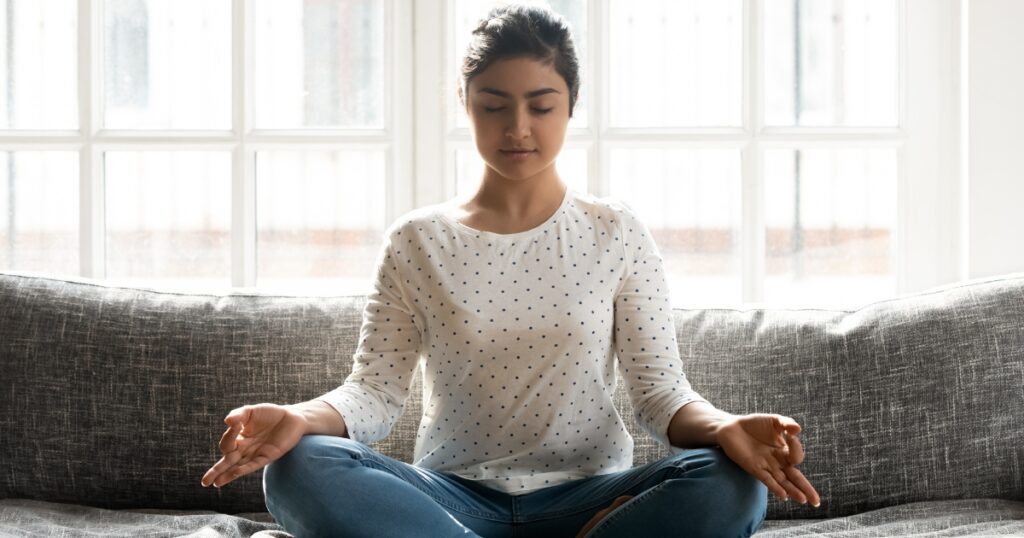
Asanas (physical positions) and pranayama (controlled breathing methods) are combined in Yoga Poses and Pranayama for Hypertension to help prevent high blood pressure altogether. From easy stretches to fast-paced flows, yoga helps people connect their breath with their movements, which makes them feel balanced and healthy. With its soft but deep approach, yoga can help with all the different problems that come with having high blood pressure. People can connect with their bodies natural wisdom and create balance and harmony by following a carefully planned series of asanas (poses) and pranayama (breathing exercises).
Pranayama, or yogic breathing, is one of the most essential healing tools in yoga. Those who practice can calm the nervous system, clear the mind, and change how the body reacts to stress by actively controlling their breath. Some techniques, like Nadi Shodhana (alternating nose breathing) and Bhramari (hummingbee breath), may help lower blood pressure and improve heart health. Adding yoga exercises and pranayama to your daily routine can help you get healthier, no matter how much experience you have with yoga. There are many poses to try, from gentle forward bends to healing inversions. Each one has the power to heal the mind, body, and spirit. People can improve their strength, vitality, and mental peace by practising yoga for a few minutes every day.
How to Breathe Through Your Diaphragm
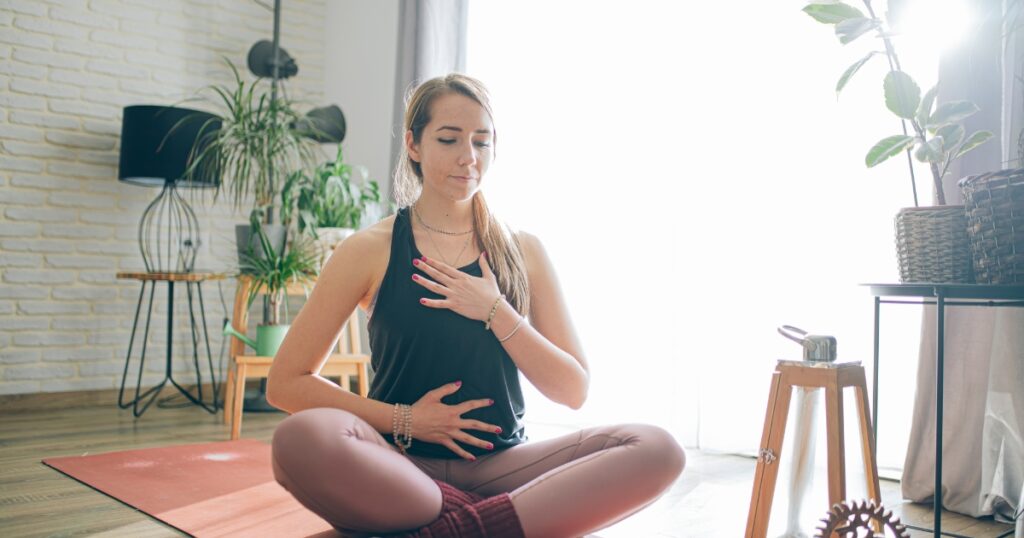
Diaphragmatic breathing can help people deal with stress by activating their body’s natural relaxation reaction. By using the diaphragm, which is the primary muscle for breathing, breathers can feel profoundly calm and balanced, which can counteract the effects of stress on the body. The diaphragm is the body’s primary breathing muscle. It sits below the ribs and controls the rhythmic rise and fall of breath. By using the diaphragm to breathe deeply and consciously, people can trigger the body’s relaxation reaction, which has a number of health benefits.
Studies have shown that breathing through the diaphragm can slow down the heart rate, lower cortisol levels, and raise vagal tone. Vagal tone is a measure of how active the vagus nerve is and is a crucial control of the parasympathetic nervous system. By making the parasympathetic nervous system stronger, diaphragmatic breathing helps you feel calm and balanced, which counteracts the harmful effects that long-term worry has on your blood pressure. Diaphragmatic breathing can become a natural, easy habit with time and practice, a comforting base in life’s storms. This simple but profound technique can be used alone or as part of daily activities like walking, driving, or working. It provides a place of peace in the middle of chaos.
Using breathing techniques in everyday life without any problems
Adding breathing exercises to your daily routine is the start of a new era in overall health. Every breath is a sacred chance to heal and renew, whether it’s a short meditation lesson in the morning, a yoga break in the middle of the day, or mindful breathing exercises when you’re feeling stressed. Incorporating Breathing Techniques into Your Daily Routine transcends mere practice; it becomes a way of life. From the moment we awaken to the stillness of sleep, every breath offers an opportunity for presence, connection, and renewal. By infusing each moment with conscious awareness, individuals can cultivate resilience, vitality, and inner peace. Amidst life’s myriad demands, moments of stillness beckon, a sanctuary of calm amidst the chaos. Whether savouring the first sip of morning coffee, basking in the warmth of sunlight, or relishing the embrace of a loved one, each moment offers an invitation to pause, breathe, and be present. By fostering a culture of wellness within our daily lives, we sow the seeds of transformation, cultivating vitality, joy, and meaning through simple acts of self-care, mindful breathing, gentle movement, and heartfelt connection. We pave the path towards optimal health and well-being for ourselves and future generations.
Tips for Long-Term Blood Pressure Maintenance

Now that you’ve embarked on the journey of utilizing breathing techniques to manage your blood pressure, it’s essential to consider strategies for long-term maintenance. These tips serve as a compass, guiding you towards sustained cardiovascular wellness.
Cultivate Consistency
Consistency is vital when it comes to reaping the benefits of breathing techniques for blood pressure management. Make it a habit to incorporate these practices into your daily routine, whether it’s through dedicated sessions of deep breathing exercises or integrating mindfulness into everyday activities.
Prioritize Stress Reduction
Stress is a significant contributor to elevated blood pressure, making stress reduction a cornerstone of long-term maintenance. Beyond breathing techniques, explore various stress-reducing activities such as meditation, yoga, spending time in nature, or engaging in hobbies that bring you joy and relaxation.
Embrace a Balanced Diet
A heart-healthy diet plays a pivotal role in blood pressure management. Opt for nutrient-rich foods such as fruits, vegetables, whole grains, lean proteins, and healthy fats. Limit sodium intake, avoid processed foods, and aim for a diet rich in potassium, magnesium, and fibre—nutrients known to support cardiovascular health.
Stay Active
Regular physical activity is essential for maintaining healthy blood pressure levels. Aim for at least 150 minutes of moderate-intensity exercise per week, incorporating activities such as brisk walking, swimming, cycling, or dancing. Exercise not only helps lower blood pressure but also improves overall cardiovascular fitness and enhances mood.
Monitor Your Blood Pressure
Regular monitoring of your blood pressure provides valuable insights into your cardiovascular health status. Invest in a home blood pressure monitor and track your readings consistently. Be sure to consult with your healthcare provider to establish target blood pressure goals and discuss any fluctuations or concerns.
Precautions and Considerations
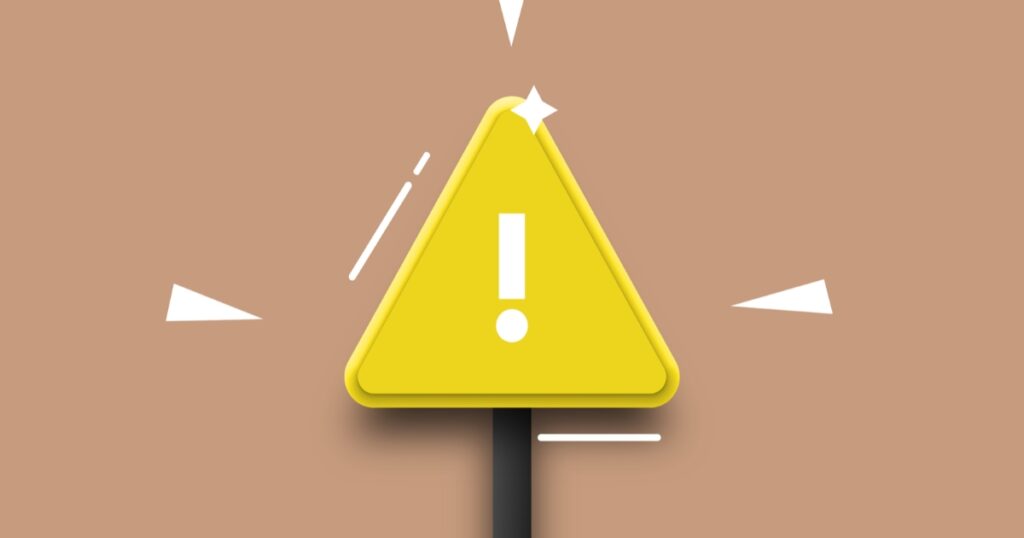
While breathing techniques offer a promising avenue for blood pressure management, it’s essential to approach their practice with mindfulness and awareness. Understanding potential precautions and considerations ensures the safe and effective utilization of these techniques.
Consult with a Healthcare Professional
Before embarking on any new wellness regimen, including breathing techniques, it’s advisable to consult with a healthcare professional, especially if you have pre-existing medical conditions or are taking medications for blood pressure management.
Avoid Overexertion
While breathing exercises are generally safe for most individuals, avoid overexertion or forcing the breath beyond your comfort level. Listen to your body’s cues and practice moderation to prevent potential strain or adverse effects.
Be Mindful of Hyperventilation
In some cases, rapid or excessive breathing during breathing exercises may lead to hyperventilation, characterized by symptoms such as dizziness, lightheadedness, or tingling sensations. If you experience these symptoms, pause the exercise and return to normal breathing until symptoms subside.
Adapt Techniques to Your Needs
Only some breathing techniques may be suitable for some. Be open to exploring different methods and adapting them to suit your individual preferences, comfort level, and health status. If specific techniques cause discomfort or exacerbate existing conditions, seek guidance from a qualified instructor or healthcare provider.

